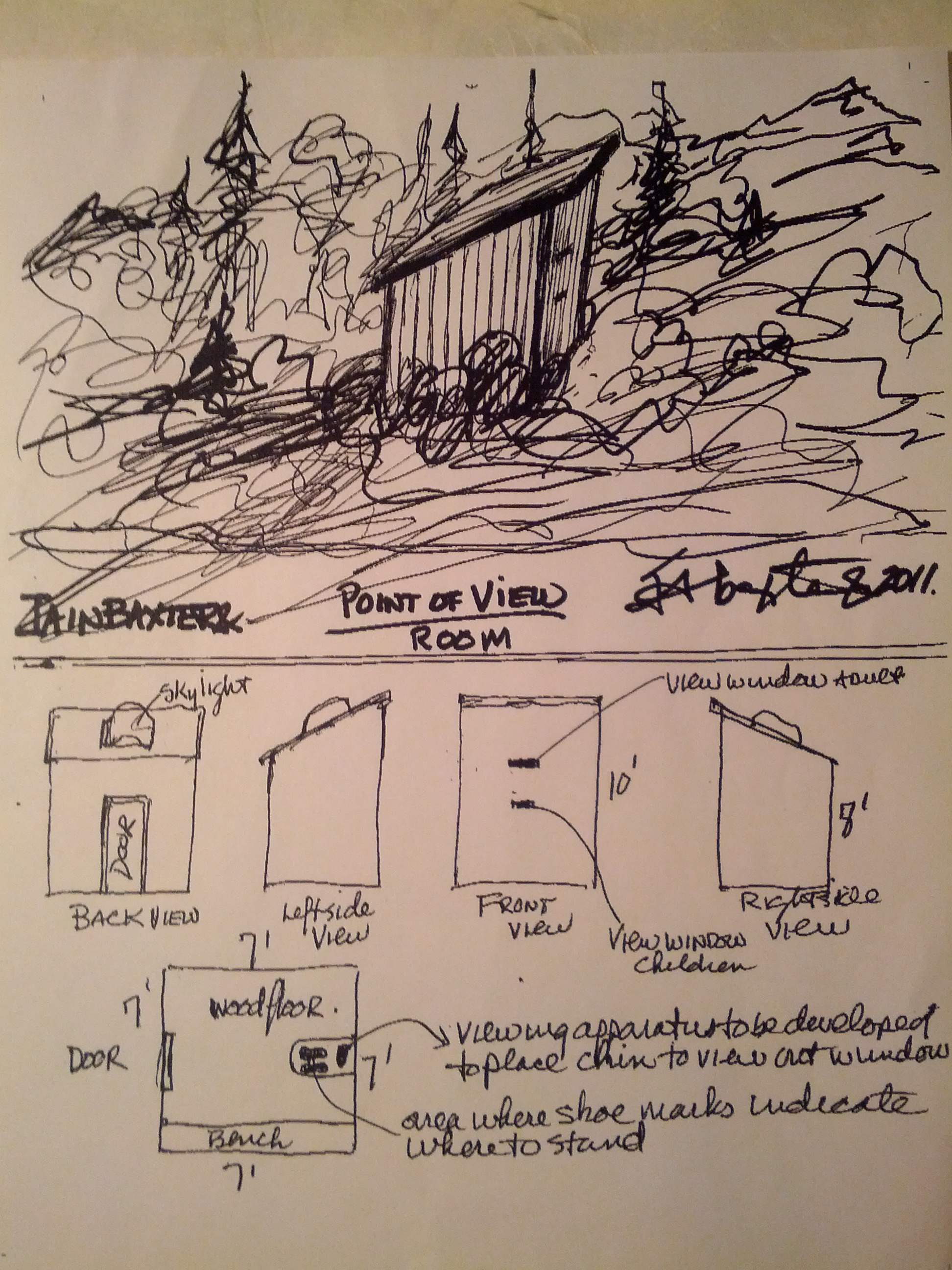IAIN BAXTER&: Non-Narrative Simultaneities
Posted: December 20, 2012Frameworks for an
Intervention
__________
IAIN BAXTER&: Non-Narrative
Simultaneities
by David Bellman
CAUSA
December 20, 2012
__________
“A narrative makes anything a ghost of itself, placing
it beyond the horizon of here and now.”
− José Ortega y Gasset (1914)
“All action revolves around death, and reality
is entirely founded on it.”
− Wyndham Lewis (1914)
“The great square has no outside, the great circle
has no inside.”
− Zen Buddhist maxim
CONJUNCTION [1]
“Listen.
This statement will leave,
is leaving, has left your
radio set at a forty-five degree
angle − at approximately
1,100 feet per second.
Did you see that?”
[Iain Baxter / N.E. Thing Company,
“Sensitivity Information Announcement.”
Presented as twelve thirty-second spots on
radio station CBX (AM) − Canadian
Broadcasting Corporation, Edmonton −
from January 15 to February 10, 1971.]
__________
“Whereas the modern artist has used his factive
or creative intelligence to manipulate matter and
experience into a pattern which could arrest the mind
in the presence of a particular aspect of existence,
the modern scientist has sought to merge the functions
of the primitive and civilized magicians. He has
developed formulas for the control of the material
and then applied these to the control of the human
mind and society with his patterned information.
That is the key to the nature of the new “mass media.”
− Marshall McLuhan (1969)
“Art is not there to provide perceptions in
direct ways. It produces deepened perception
of experience. More must happen than simply
logically understandable things. Art is not
there to be simply understood, or we would
have no art.”
– Joseph Beuys (1970)
CONJUNCTION [2]
IAIN BAXTER&, Information Mural / Information Room (Digital Conversion Code), 2012. [Installation view – (detail) with CAUSA documentary film, North Vancouver Museum.]
“The progression of a painter’s work, as it travels from
point to point, will be toward clarity; toward the
elimination of all obstacles between the idea and the
observer. As examples of such obstacles, I give (among
others) memory, history, or geometry, which are swamps
of generalization from which one might pull out parodies
of ideas (which are ghosts) but never an idea in itself.
To achieve this clarity in itself is, inevitably, to be
understood.”
– Mark Rothko (1949)
“Electric speeds create centers everywhere. Margins
cease to exist on this planet.”
– Marshall McLuhan (1969)
CONSTRUCTION [3]
IAIN BAXTER&, A World of Information, stencilled canvas (digital code overlaying mass-produced World Map), 2011. [Installation view, North Vancouver Museum, 2012.]
________________________________________________________________________
“The eye is the first circle, the horizon which it forms
is second; and throughout nature this primary figure is
repeated without end. It is the highest emblem in the
cipher of the world. … We are all our lifetime reading
the copious sense of this first of forms.”
– Ralph Waldo Emerson (1841)
“Nothing stands alone; each is only a part. A picture
must be a portrayal of relationships.”
– Emily Carr (1933)
IAIN BAXTER&, Mirror Image, Loutet Urban Farm, North Vancouver. [Detail of installation: fourteen mirrors (in two rows), 2012.] Photo: M. Cynog Evans.
CONJUNCTION [4]
IAIN BAXTER&, Mirror Image, Loutet Urban Farm, North Vancouver.
[Detail of installation: fourteen mirrors (in two rows), 2012.] Photo: M. Cynog Evans.
________________________________________________________________________
“The question of urban society is to be taken seriously
because we should not take it for granted that we shall
live in a true urban environment in the sense we take it
now. The domestic environment appears to be more
readily the basic unit or individual cell, for it acts as
the direct connection between the individual and urban
environment. It is into this more or less closed individual
environment that the individual is able to introduce
‘News of the World,’ i.e., messages from the immediate
socio-cultural world (and from remote historical worlds)
which cross (independently) time and space, influencing
his ways of thinking, judging and decisions, only to the
extent that he wants to pay attention to them.”
– Abraham Moles (1971)
“In the end, we each live our own landscape inside the
Infoscape – Landscape as Lifescape.”
– IAIN BAXTER& (1990)
CONJUNCTION [5]
IAIN BAXTER&, Sketch for Point of View Room, 2011.
__________
20.12.12.
__________
![IAIN BAXTER&, Information Mural / Information Room (Digital Conversion Code), 2012. [Installation view -- (detail) with CAUSA documentary film, North Vancouver Museum.]](images/conjunction-2.jpg)
![IAIN BAXTER&, A World of Information, stencilled canvas (digital code overlaying mass-produced World Map), 2011. [Installation view, North Vancouver Museum, 2012.]](images/conjunction-3.jpg)
![IAIN BAXTER&, Mirror Image, Loutet Urban Farm, North Vancouver. [Detail of installation: fourteen mirrors (in two rows), 2012.] Photo: M. Cynog Evans.](images/conjunction-4.jpg)
![IAIN BAXTER&, Mirror Image, Loutet Urban Farm, North Vancouver. [Detail of installation: fourteen mirrors (in two rows), 2012.] Photo: M. Cynog Evans.](images/conjunction-4-b.jpg)
![IAIN BAXTER&, Mirror Image, Loutet Urban Farm, North Vancouver. [Detail of installation: fourteen mirrors (in two rows), 2012.] Photo: M. Cynog Evans.](images/conjuction-4-c.jpg)
